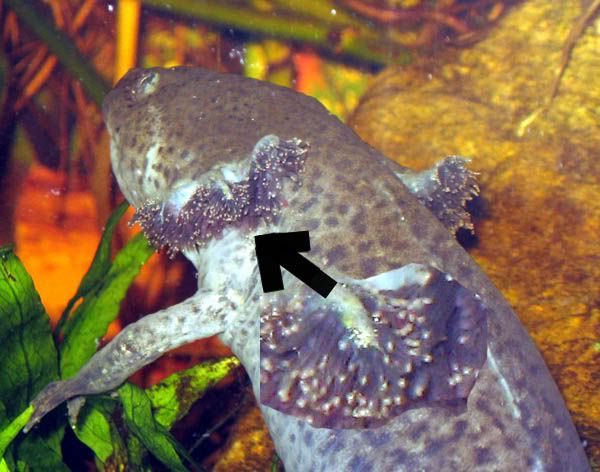featherbutt
New member
- Joined
- May 7, 2007
- Messages
- 117
- Reaction score
- 8
- Points
- 0
- Age
- 43
- Location
- Okanagan
- Country
- Canada
- Display Name
- Mitch Guilderson
I added a freshwater mussel to my tank about a week ago thinking it might be an interesting visual addition and also filter the water....
so now I have 4 axolotls infested with cooties. They are little whitish nodes all over the gills, and also along the ridges of caudal fins and toes. It will be the last time I ever do anything. No more adding little things.
lesson learned, in the mean time, what now?
I don't really know what I'm dealing with here, flukes? fish lice? They are visible and don't seem to be bothering the animals, but it's only begun and must be stressful. The gills are all a-cluster with them.
What are some possible parasites that manifest this way? If only I had a picture to compare to, then I could go onto looking for a treatment option.
I dread the fact that ultimately I'm going to have to scrap an entire planted tank.
so now I have 4 axolotls infested with cooties. They are little whitish nodes all over the gills, and also along the ridges of caudal fins and toes. It will be the last time I ever do anything. No more adding little things.
lesson learned, in the mean time, what now?
I don't really know what I'm dealing with here, flukes? fish lice? They are visible and don't seem to be bothering the animals, but it's only begun and must be stressful. The gills are all a-cluster with them.
What are some possible parasites that manifest this way? If only I had a picture to compare to, then I could go onto looking for a treatment option.
I dread the fact that ultimately I'm going to have to scrap an entire planted tank.

